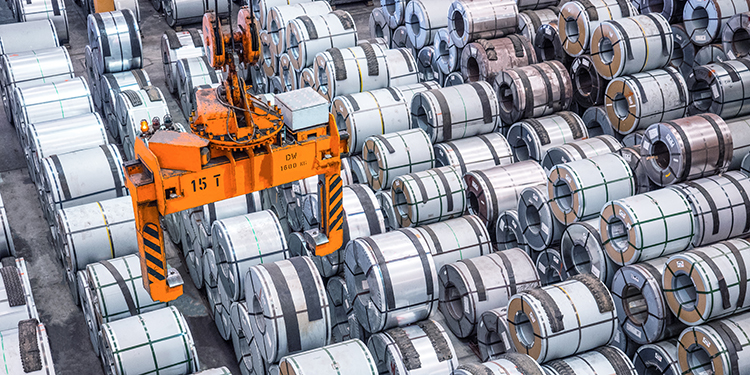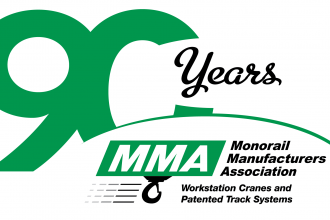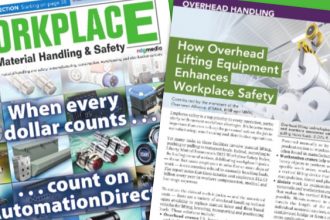Lift Any Load Safely And Securely With Below The Hook Attachments

One of the best and safest practices in overhead lifting is to match the load to the load handling device. To ensure that a load — regardless of its shape, weight, or fragility — is lifted, lowered, and positioned safely and securely, a broad range of different, application-specific attachments can be added to an overhead crane or monorail’s hoist. These devices, called below the hook attachments or end effectors, are offered by overhead handling equipment manufacturers in both standard and custom engineered designs that adapt to the specific requirements or features of the load.
The most common types of attachments include:
C hooks: To enable the lifting of a coil of material, these devices incorporate a hook that is inserted the coil’s inner diameter. An integrated motor (connected to the hoist’s bottom block) powers the hook’s rotation for greater load control.
Drum turners: Designed specifically to interface with drums, these devices grip and turn them over for filling and emptying.
Gripping lifters: Using either friction or pressure to hold a load, these devices incorporate tong grabs, coil grabs or clamps that create grip via scissor-type action.
Lifting beams: Built of metal, these devices feature a beam suspended from a hoist/crane to provide multiple load lifting points for a more secure connection and better control of the load’s movement. Such a device that uses two or more hooks to spread the load over more than one lifting point is called a spreader beam.
Magnets: Utilized either with or without an electrical power supply to charge the magnet, these devices lift, carry or release flat or round ferrous objects.
Mechanical lifters: These manually actuated devices are built with two or more rigid parts that move in tandem to secure the load.
Pallet lifters: For lifting of pallets from underneath, through their fork openings, these devices are equipped with forks.
Sheet lifters: Attachments that employ two claws that wrap around the edges of a load of sheet metal or wood. To prevent the sheet from falling out of the lifter, the claws typically have an integrated lip on the lower portion.
Slings or strap hoists: Intended for handling of materials that are too bulky or large to be maneuvered or transported with any other attachment (such as steel coils or sheets), these devices are constructed of nylon, polyester, wire rope or chain.
Vacuum lifters: Equipped with an electric-powered extraction pump and sealed pads, these attachments create a vacuum that connects and secures the lifter to the load.
Want to learn more about overhead handling and how it might be applied in your operation? MHI’s Overhead Alliance (which includes the Crane Manufacturers Association of America (CMAA), the Hoist Manufacturers Institute (HMI), and the Monorail Manufacturers Association (MMA)) explores 13 different ways these technologies enhance manufacturing and distribution operations in the free publication, “Expand Your Possibilities. Discover the Potential. Choose Overhead Lifting.”



